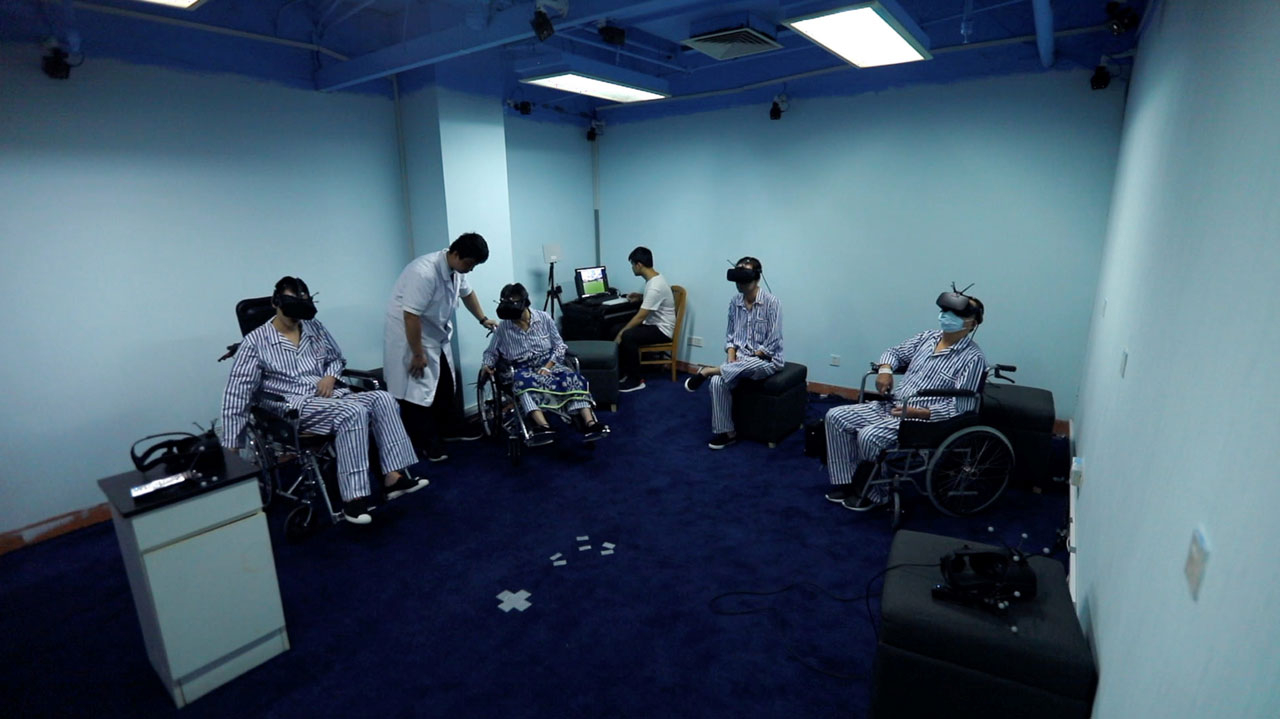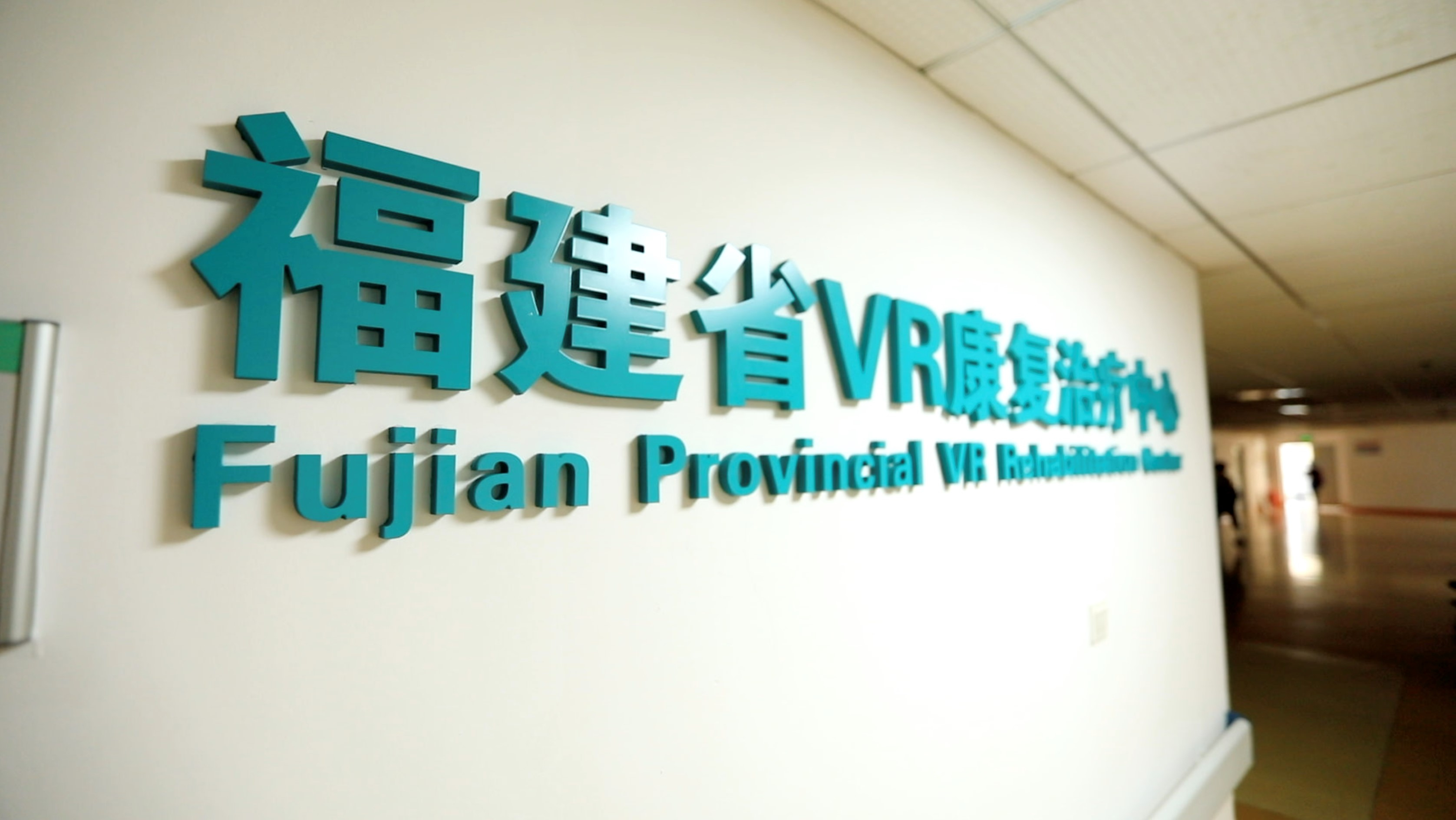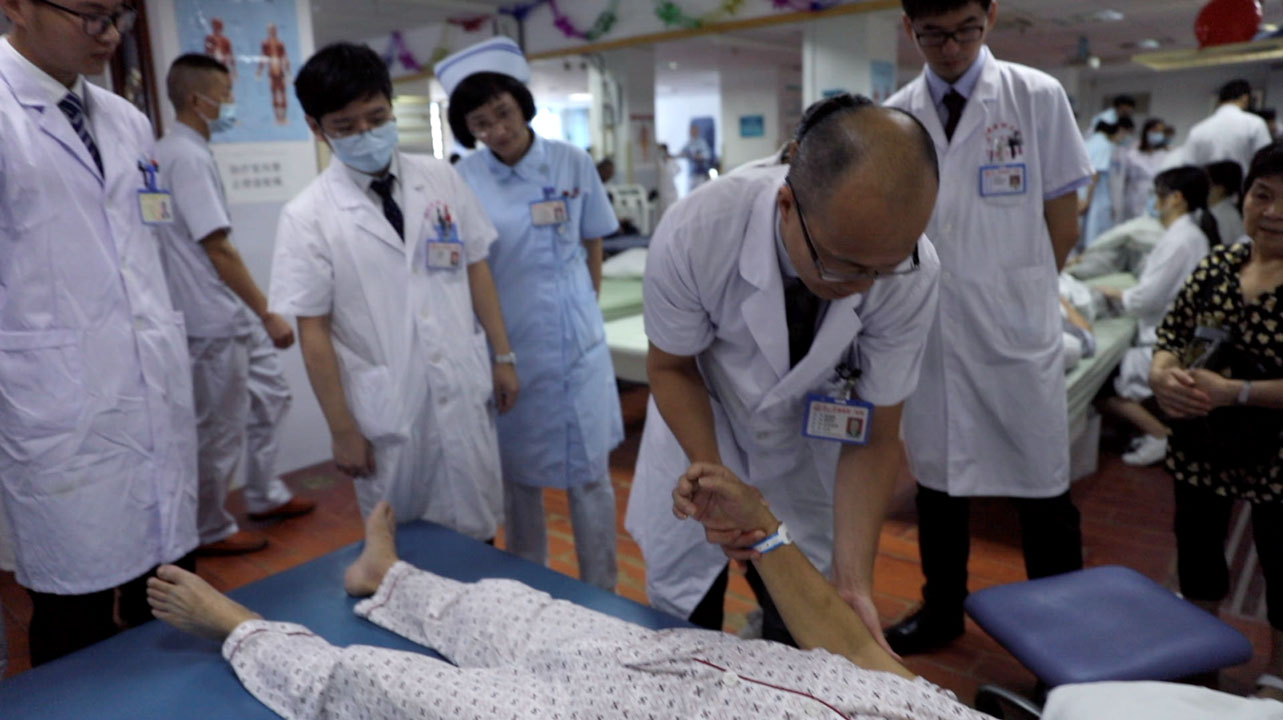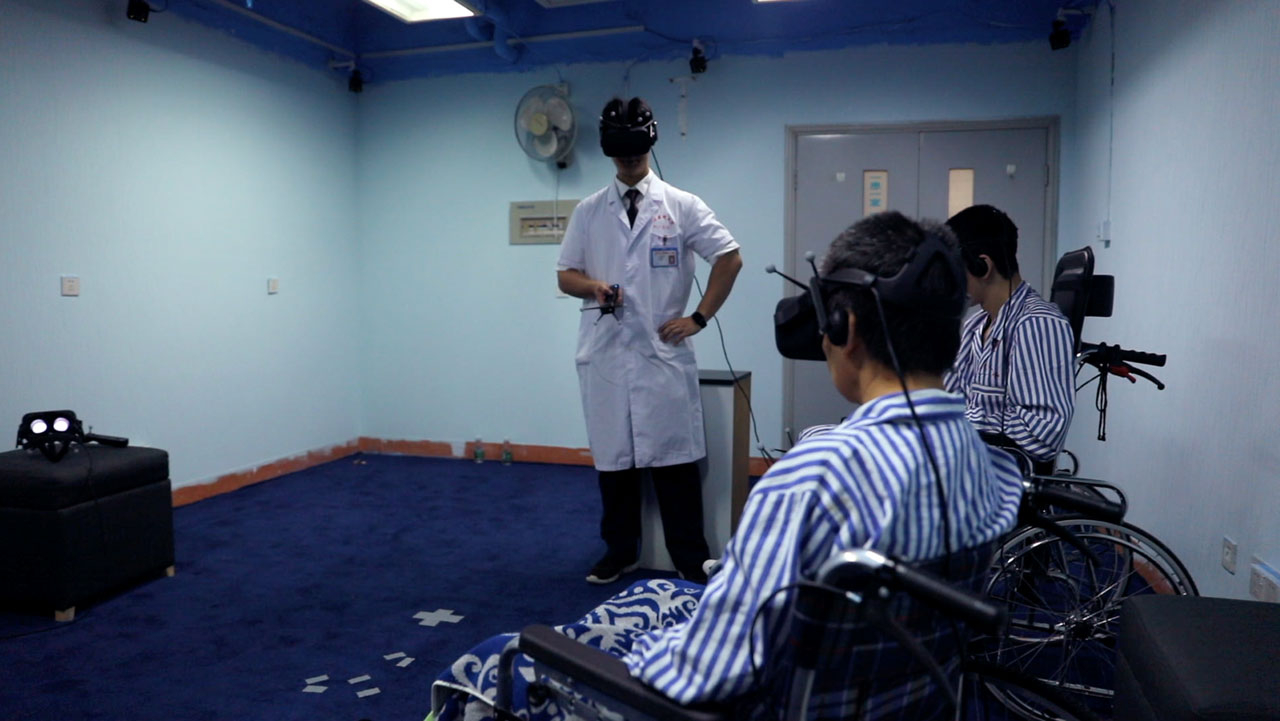
Health
09:17, 30-Oct-2018
Living in the future – Virtual rehab
Updated
08:18, 02-Nov-2018
By Omar Khan, Zhao Ruikun
03:41

Virtual reality (VR) is a technology that has transformed not only how we engage with the digital world, but also how it interacts with us. From objects flying out of a movie screen while watching a film to golf balls flying off a tee after taking a swing with a handheld controller, VR has become a mainstay of the media and entertainment industries.
However, for some, these simulated experiences can be a nuisance. Overuse can lead to nausea for some, and others, typically in the e-sports and video game industry, simply disregard the technology as an unnecessary add-on to an already established environment.
And then there are others for whom VR is a unique platform, not because of its application or usage, but for the opportunities held in its immersive nature that could bring about long-lasting outcomes for humanity in a way we've never seen before.
One Chinese hospital, in particular, is embracing this reality.
Technology therapy
In southeast China's city of Fuzhou, the First Affiliated Hospital of Fujian Medical University has turned to virtual reality as a new form of medical rehab. Alongside engineering firm Noitom, designer and developer of the technology, the two have jointly established Fujian Provincial VR Rehabilitation Center – where the computer-generated realm blends with medicine, a China-first according to those behind the project.

Fujian Provincial VR Rehabilitation Center /CGTN Photo
Fujian Provincial VR Rehabilitation Center /CGTN Photo
So, who's it for? And how does it work?
The project – which was approved and funded by the provincial government of Fujian, has an aspirational, if untested, plan: The development of a VR-based rehab system for post-stroke patients and those suffering from other motor disabilities, such as paralysis.
The innovative technique is not meant to replace traditional forms of rehab, however, and seemingly never will. Dr. Ni Guoxin, head of the hospital's Department of Rehabilitation Medicine, explains that the three-month-old endeavor is intended to complement and work in tandem with established rehab practices.
The appeal of VR technology stems from several key features, including immersion, interaction and imagination. These aspects combine to create a virtual environment which allows patients to interact with objects, in a way that develops new cognitive processes and their imagination. With modifiable VR displays and the ability to tailor virtual rehabilitation environments, doctors are able to collect accurate kinematic information while also gaining a better understanding of how a patient moves.
VR rehab in China
At the moment, there is no considerable demand for VR-based rehab systems, neither commercially nor from the medical industry, on a global scale. But in China, this therapeutic technique is not looking to capitalize on any particular market or business trend. Instead, it's being used to fill a small but important role in the country's rehab service sector.

CGTN Photo
CGTN Photo
Factoring in China's population and the country's high incidence rate for motor-related diseases, while also acknowledging the country's underdeveloped medical rehabilitation practices, Dr. Ni believes VR-related systems could ease the sector's burdens and get more people the treatment they need.
The new form of treatment also presents a number of advantages over traditional therapies, as can be seen in the 100 or so patients using the technology in Fuzhou.
The system's creators claimed it's safe. Patients are able to use remote controls while wearing custom-designed headsets that keep everything within arm's reach, and this also allows them to go through the motions while seated.
The feedback generated by the tasks they complete, such as playing golf, rowing a boat, or even walking through a shopping center, where they can pick items off the shelf, is processed in real-time, with both quantitative evaluations and objective comparisons available to the doctors.

CGTN Photo
CGTN Photo
Perhaps just as importantly, it's also a lot of fun. Doctors have noted that patients often express excitement before their VR therapy sessions. A sense of competition at an individual level, and the way it is considered to be an escape from routine therapy highlight how the project is pushing new technology and medicine closer together. When patients take the initiative and demand a certain type of treatment, and are actively willing to engage with it, these calls cannot be ignored.
Vision for the future
Noitom and the hospital have outlined three stages for their project. In the first phase – which is currently taking place – programs will be designed and aimed at training patients' upper limb functions, attentiveness and daily tasks. In the second stage, exercises will move on to targeting patients' lower limbs. And eventually, a comprehensive motion capture system will be developed to assess, provide feedback and collect data on a full scale, covering the entire human body.
Yet arguably the most ambitious objective is to take the project beyond the confines of the hospital and provide rehab therapy in people's homes.
Dr. Ni envisions a future where hundreds of small VR rehab points are established in communities all across the country and digitally connected to a central platform. From there, this futuristic network can deliver his ultimate goal of remotely providing rehabilitation therapy whenever and wherever it's needed.
(Wang Hengle also contributed to the story.)

SITEMAP
Copyright © 2018 CGTN. Beijing ICP prepared NO.16065310-3
Copyright © 2018 CGTN. Beijing ICP prepared NO.16065310-3